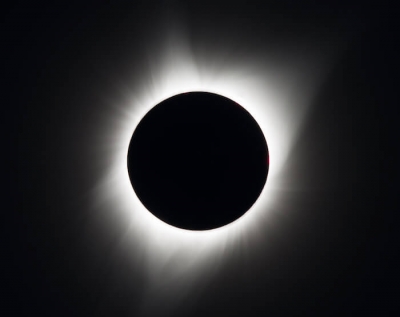
Our Sun is surrounded by a jacket of gases called an atmosphere. The corona is the outermost part of the Sun’s atmosphere.
The corona is usually hidden by the bright light of the Sun’s surface. That makes it difficult to see without using special instruments. However, the corona can be seen during a total solar eclipse.
The corona reaches extremely high temperatures. However, the corona is very dim. Why? The corona is about 10 million times less dense than the Sun’s surface. This low density makes the corona much less bright than the surface of the Sun.
The corona’s high temperatures are a bit of a mystery. Imagine that you’re sitting next to a campfire. It’s nice and warm. But when you walk away from the fire, you feel cooler. This is the opposite of what seems to happen on the Sun.
Astronomers have been trying to solve this mystery for a long time. The corona is in the outer layer of the Sun’s atmosphere—far from its surface. Yet the corona is hundreds of times hotter than the Sun’s surface.
A NASA mission called IRIS may have provided one possible answer. The mission discovered packets of very hot material called “heat bombs” that travel from the Sun into the corona. In the corona, the heat bombs explode and release their energy as heat. But astronomers think that this is only one of many ways in which the corona is heated.
Picture Credit : Google

